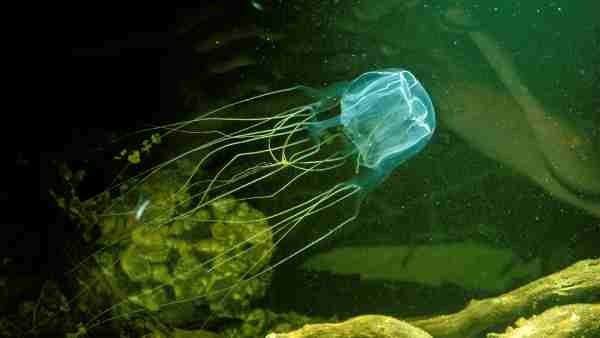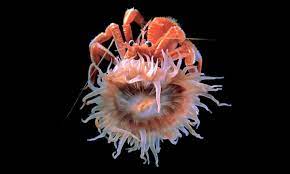In the mesmerizing tapestry of the animal kingdom, the heart serves as a symbolic powerhouse, an emblem of life’s rhythm. However, scattered across this vibrant canvas are creatures defying this norm, existing without a heartbeat. “Animals With No Hearts” presents a paradoxical marvel in biology, challenging our conventional understanding of life. In this intriguing exploration, we venture into the enigmatic realm of organisms devoid of this quintessential organ.
Table of Contents
From the profound secrets of the humble jellyfish pulsating through the oceans to the ethereal wonders of microorganisms, life finds ingenious ways to persist sans a heart. Join us on this illuminating journey as we decode the intricacies of these heartless beings, shedding light on their remarkable adaptations, evolutionary pathways, and the essence of life that defies the steady throb of a heartbeat.
Understanding the Basics of Circulation:
Understanding the basics of circulation is paramount to grasping the essence of life processes in organisms. Circulation is the movement of blood or other bodily fluids within an organism’s body, facilitating the transportation of essential substances like oxygen, nutrients, hormones, and waste products.
This vital process ensures the distribution of oxygen and nutrients to cells and helps maintain metabolic balance. Typically associated with a central pumping organ like the heart, circulation varies across the animal kingdom, showcasing diverse adaptations to fulfill specific physiological needs. A thorough comprehension of circulation provides a foundational understanding of how life sustains and thrives, with or without a centralized heart.
Animals with No Hearts: Myth or Reality?:
The notion of animals without hearts might seem counterintuitive, as the heart is often synonymous with life itself. However, a fascinating array of creatures challenges this conventional belief. While they may not possess a centralized, pulsating heart like mammals, birds, or reptiles, some organisms demonstrate life processes without a traditional heart.
These animals have evolved unique adaptations, utilizing alternative circulatory mechanisms to sustain their existence. Exploring these exceptional creatures unravels the intriguing facets of life forms that defy the traditional heartbeat-driven circulation model.
Jellyfish:

Jellyfish, fascinating marine creatures, operate without a centralized heart. Their circulatory system is a hydrostatic one, relying on muscular contractions to pump water through their gelatinous bodies. As water moves, it helps distribute nutrients and oxygen while aiding in waste removal.
Their unique anatomy, with a delicate balance of water and a loose network of nerves, allows for efficient nutrient diffusion. Jellyfish, often considered as simple organisms, showcase the elegance of adaptation, surviving and thriving in aquatic environments with their pulsating, mesmerizing movements that exemplify their hydrodynamic circulatory strategy.
Flatworms:

Flatworms, part of the phylum Platyhelminthes, have a remarkably simple body plan and lack a circulatory system with a centralized heart. Their flat, thin bodies allow for efficient gas and nutrient exchange through diffusion across their surface. Nutrients from their diet are absorbed directly into their cells.
The absence of a complex circulatory system aligns with their relatively uncomplicated structure, relying on direct contact with their environment for vital processes. This adaptation suits their aquatic or moist habitats, showcasing nature’s efficiency in designing diverse life forms to thrive and survive.
Corals & Polyps:

Corals and polyps, vital components of marine ecosystems, operate without a true circulatory system. Instead, they utilize a combination of water currents and cellular-level processes for nutrient distribution. Water currents carry nutrients, oxygen, and plankton to their cells, and waste products are eliminated through simple diffusion.
The lack of a centralized heart is compensated by their sessile lifestyle and the intricate interplay between their anatomy and the surrounding marine environment. These fascinating organisms emphasize the adaptability of life, highlighting the diverse mechanisms life forms employ to sustain themselves and contribute to the beauty and balance of coral reef ecosystems.
Starfish:

Starfish, members of the class Asteroidea, have a unique circulatory mechanism known as a water vascular system. Though not a heart, this hydraulic system serves crucial roles in locomotion and feeding. Water enters through the madreporite and circulates through canals, powering tube feet and aiding in gas exchange. Nutrients and gases are transported via simple diffusion across their thin skin.
This decentralized yet effective system allows starfish to efficiently control their tube feet, enabling their characteristic movements. The absence of a centralized heart showcases the diversity of circulatory adaptations in the animal kingdom, highlighting how nature tailors solutions to specific organisms’ needs and lifestyles.
Sea Anemone:

Sea anemones, remarkable marine animals belonging to the phylum Cnidaria, do not possess a circulatory system akin to those in complex vertebrates. They lack a centralized heart and instead rely on the movement of water and diffusion for nutrient and gas exchange. Water movement, driven by natural currents or the actions of the anemone, facilitates the flow of nutrients and oxygen to cells throughout the body.
Waste elimination follows the same pathway, emphasizing the importance of their aqueous environment. This efficient, diffusion-based system aligns with their relatively simple structure and contributes to their ability to thrive in various marine habitats, underscoring the elegance of nature’s evolutionary adaptations.
Sponges:

Sponges, representing the phylum Porifera, exhibit a lack of a true circulatory system or a centralized heart. Their unique anatomy, characterized by a porous structure, enables water to circulate through their bodies. As water flows through their canals, it facilitates nutrient intake and gas exchange through simple diffusion across their cells. This mechanism allows sponges to efficiently absorb dissolved oxygen and filter microscopic plankton and particles from the water.
The absence of a complex circulatory system is compensated by their ability to maintain a constant flow of water, ensuring their cells receive vital nutrients and oxygen for their survival and growth. The simplicity of this method reflects the adaptability and resourcefulness of these ancient and diverse aquatic organisms.
Sea Cucumbers:

Sea cucumbers, intriguing marine invertebrates belonging to the class Holothuroidea, lack a heart or a centralized circulatory system. Instead, they possess a water vascular system primarily used for locomotion and feeding. Water is pumped through this hydraulic system to extend and retract tube feet, aiding in movement across the ocean floor. Additionally, this system supports respiration and waste elimination.
While not a conventional circulatory structure, the water vascular system ensures the efficient distribution of nutrients and gases throughout their bodies. The remarkable adaptability of sea cucumbers exemplifies the diversity of evolutionary solutions in the animal kingdom, showcasing how different organisms have evolved to thrive in their respective habitats.
Sea Lilies:

Sea lilies, graceful marine creatures also known as feather stars, operate without a centralized heart. They possess a simple water vascular system that aids in locomotion and feeding. Water enters the system through a sieve plate and moves through canals, extending into their branching arms.
This hydraulic system allows for graceful movement and efficient feeding. Despite the absence of a complex circulatory structure, their water vascular system adequately meets their needs, highlighting their ability to thrive in marine environments. The beauty and functionality of sea lilies underscore the variety of solutions that evolution has crafted, each tailored to an organism’s unique ecological niche and lifestyle.
Hydrostatic Skeleton and Circulatory Adaptations:
Animals with hydrostatic skeletons, such as many invertebrates, utilize the principles of fluid mechanics to achieve movement and support. In these organisms, the body cavity, filled with a fluid-like substance, functions as both the circulatory system and the structural support.
Contractions of muscles against this fluid enable movement and locomotion. The concept of a hydrostatic skeleton showcases how organisms ingeniously integrate circulatory adaptations with structural support, emphasizing the diverse strategies nature employs for survival.
Open Circulatory System and Hemolymph:
An open circulatory system is a circulatory mechanism where a fluid called hemolymph bathes the organs directly. This system lacks vessels to contain the circulating fluid, which is common in arthropods and some mollusks. Hemolymph is responsible for the transportation of nutrients, waste products, and hormones.
Understanding this unique system sheds light on the efficiency and adaptability of diverse circulation strategies, challenging the traditional closed circulatory systems found in humans and other vertebrates.
Symbiotic Relationships and Circulatory Efficiency:
In the realm of circulatory efficiency, symbiotic relationships play a significant role. Symbiotic organisms, such as those in mutualistic relationships, often exhibit efficient circulation facilitated by both partners.
For instance, in certain insects like aphids, symbiotic bacteria aid in the efficient processing of nutrients within the circulatory system. Exploring these relationships provides insights into how collaboration and mutual benefit enhance circulatory efficiency in the animal kingdom.
Tardigrades: Microscopic Marvels with Unique Circulation:
Tardigrades, also known as water bears, are microscopic, resilient creatures with exceptional survival abilities. These micro-animals possess a unique circulatory system adapted to their minuscule size.
They lack a dedicated heart but utilize muscle contractions and their hydrostatic skeleton to circulate nutrients and oxygen throughout their bodies. Understanding the circulatory adaptations of tardigrades offers a glimpse into the fascinating strategies that enable life to persist in the most challenging environments.
Evolutionary Perspectives on Heartless Circulatory Systems:
The evolution of heartless circulatory systems in certain organisms highlights the remarkable adaptability and versatility of life. It showcases the diverse paths evolution can take to ensure the survival and efficiency of life processes.
Exploring the evolutionary trajectories of heartless circulatory systems provides a broader understanding of the complex interplay between form, function, and environment in the biological world.
Final Words:
The exploration of animals without hearts illuminates the extraordinary diversity of life-sustaining mechanisms that defy conventional expectations. From microscopic tardigrades to creatures with hydrostatic skeletons, these organisms showcase the remarkable versatility and adaptability of life in the absence of a centralized heart.
Studying these heartless circulatory systems enriches our comprehension of the awe-inspiring variety of life forms and the innovative strategies that evolution has crafted to ensure survival and functionality. It underscores the fundamental principle that life, in its various forms, finds ingenious ways to persist and thrive, challenging our perceptions and inviting us to delve deeper into the wonders of the natural world.
Reference:
- https://byjus.com/question-answer/which-animals-dont-have-heart/
- https://ng.opera.news/ng/en/pet-animals/93792a066e5dccd3fc9ace492c3ef96a
- https://www.sciencefocus.com/nature/which-animal-has-the-smallest-heart

Rahul M Suresh
Visiting the Zoo can be an exciting and educational experience for all involved. As a guide, I have the privilege of helping students and visitors alike to appreciate these animals in their natural habitat as well as introducing them to the various aspects of zoo life. I provide detailed information about the individual animals and their habitats, giving visitors an opportunity to understand each one more fully and appreciate them in a more intimate way.









